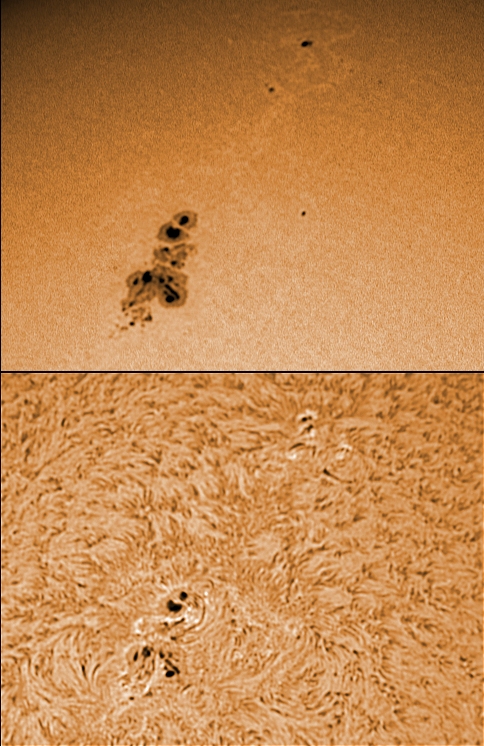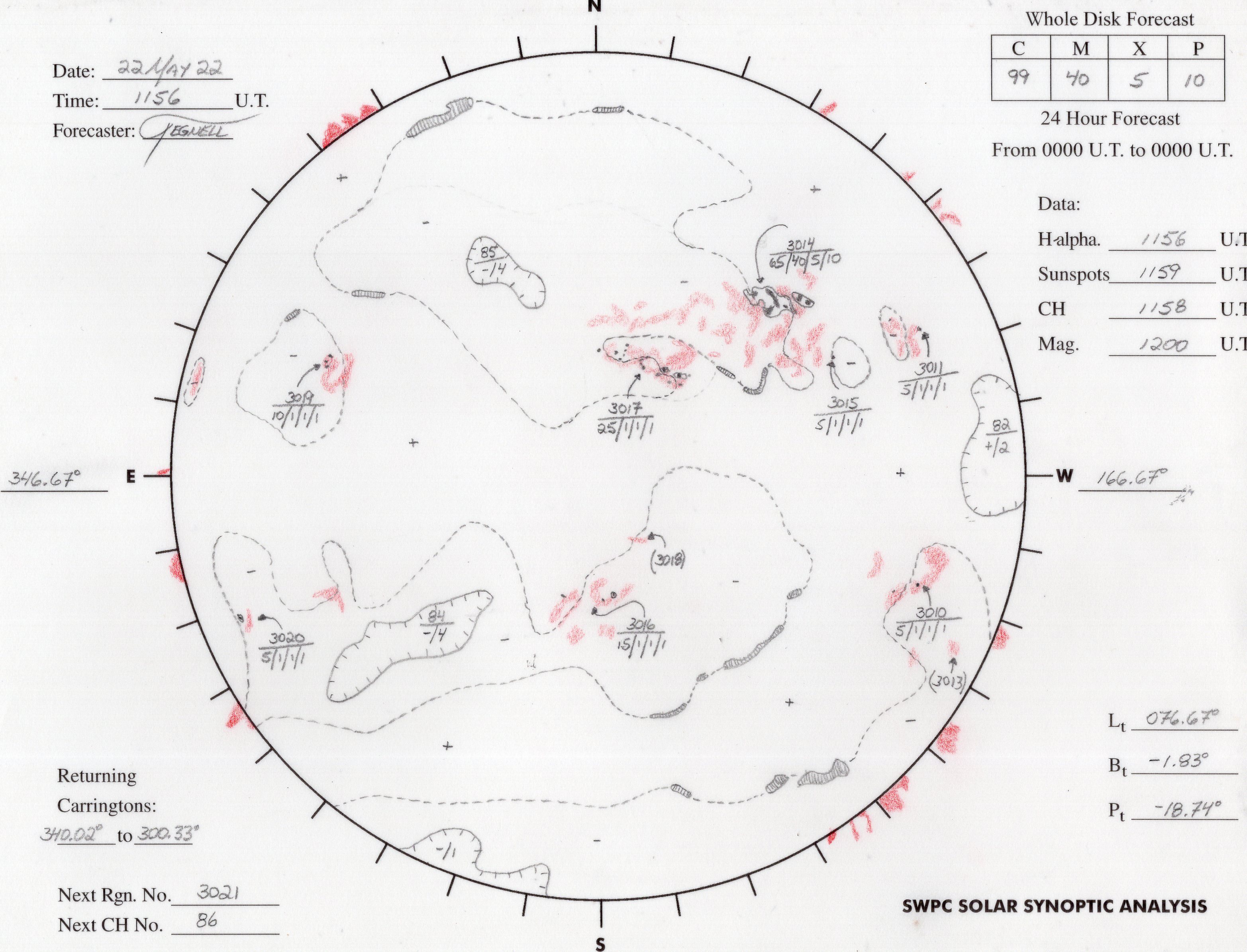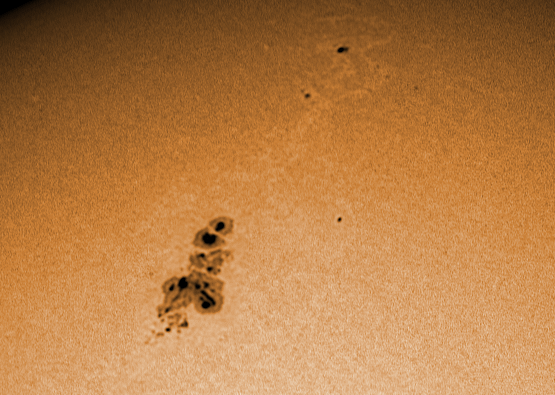Comparition of photosphere and cromosphere images of the same area AR3014/AR3012.
The photosphere is a star's outer shell from which light is radiated.
The chromosphere ("sphere of color") is the second of the three main layers in the Sun's atmosphere and is roughly 3,000 to 5,000 kilometers deep. The chromosphere sits just above the photosphere and below the solar transition region.
The density of the chromosphere is only 10−4 times that of the photosphere, the layer beneath, and 10−8 times that of the atmosphere of Earth at sea level. This makes the chromosphere normally invisible and it can be seen only during a total eclipse, where its reddish color is revealed, and using narrowband Hα solar telescopes.
Whilst the photosphere has an absorption line spectrum, the chromosphere's spectrum is dominated by emission lines. In particular, one of its strongest lines is the Hα at a wavelength of 656.3 nm; this line is emitted by a hydrogen atom whenever its electron makes a transition from the n=3 to the n=2 energy level. A wavelength of 656.3 nm is in the red part of the spectrum, which causes the chromosphere to have its characteristic reddish colour.
By analysing the spectrum of the chromosphere, it was found that the temperature of this layer of the solar atmosphere increases with height in the chromosphere itself. The temperature at the top of photosphere is only about 4,400 K, while at the top of chromosphere, some 2,000 km higher, it reaches 25,000 K. This is however the opposite of what we find in the photosphere, where the temperature drops with increasing height. It is not yet fully understood what phenomenon causes the temperature of the chromosphere to paradoxically increase further from the Sun's interior. However, it seems likely to be explained, partially or totally, by magnetic reconnection.
Photosphere: Image taken with Vixen 102M telescope, apperture partially close (40mm available), Baader film and Baader Solar Continuum filter.
Chromosphere: Image taken with Coronado PST 40mm telescope, barlow Celestron Ultima x2
Camera: DMK 23U618
(source: Wikipedia)
Comparación de imágenes de fotosfera y cromosfera de la misma zona AR3014/AR3012.
La fotosfera es la capa exterior de una estrella desde la que se irradia la luz.
La cromosfera ("esfera de color") es la segunda de las tres capas principales de la atmósfera del Sol y tiene una profundidad aproximada de 3.000 a 5.000 kilómetros. La cromosfera se encuentra justo encima de la fotosfera y debajo de la región de transición solar.
La densidad de la cromosfera es solo 10−4 veces mayor que la de la fotosfera, la capa inferior, y 10−8 veces mayor que la de la atmósfera de la Tierra al nivel del mar. Esto hace que la cromosfera sea normalmente invisible y solo se puede ver durante un eclipse total, donde se revela su color rojizo, y usando telescopios solares Hα de banda estrecha.
Mientras que la fotosfera tiene un espectro de líneas de absorción, el espectro de la cromosfera está dominado por líneas de emisión. En particular, una de sus líneas más fuertes es la Hα a una longitud de onda de 656,3 nm; esta línea es emitida por un átomo de hidrógeno cada vez que su electrón hace una transición del nivel de energía n=3 al n=2. Una longitud de onda de 656,3 nm se encuentra en la parte roja del espectro, lo que provoca que la cromosfera tenga su característico color rojizo.
Al analizar el espectro de la cromosfera, se encontró que la temperatura de esta capa de la atmósfera solar aumenta con la altura en la propia cromosfera. La temperatura en la parte superior de la fotosfera es de solo unos 4.400 K, mientras que en la parte superior de la cromosfera, unos 2.000 km más alta, alcanza los 25.000 K. Sin embargo, esto es lo contrario de lo que encontramos en la fotosfera, donde la temperatura desciende al aumentar la altura. . Todavía no se comprende completamente qué fenómeno hace que la temperatura de la cromosfera aumente paradójicamente más allá del interior del Sol. Sin embargo, parece probable que se explique, parcial o totalmente, por la reconexión magnética.
Fotosfera: Imagen tomada con el telescopio Vixen 102M, apertura parcialmente cerrada (40 mm disponibles), película Baader y filtro Baader Solar Continuum.
Cromosfera: Imagen tomada con el telescopio Coronado PST de 40 mm, barlow Celestron Ultima x2
Cámara: DMK 23U618
(fuente: Wikipedia)



